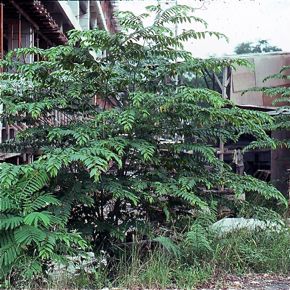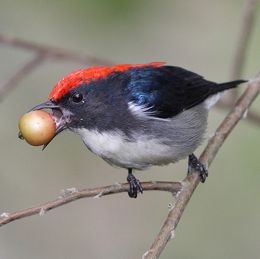The cherry tree (Muntingia calabura) or buah cheri in Malay, is also known as Indian/Japanese cherry, Jamaica cherry and capulin (above left). It was introduced to the Philippines in the late 19th century from tropical America. Since then the tree has spread throughout Southeast Asia, distributed mainly by birds and bats.
This small-sized tree is fast growing, developing a spreading crown and bearing berries within a year or two. An excellent shade tree, it spreads easily to any open ground be it gardens, waste grounds or parks. In Singapore it is not currently encouraged in the urban areas and parks as the numerous birds it attracts cause nuisance in terms of noise pollution and the droppings they generate. Once popular, it is now confined to areas away from urban dwellings.
But if you plan to attract birds, plant the cherry tree. The seeds germinate easily, especially if enhanced by passage through the digestive tracts of birds and bats.
The red, sweetish berries were once popular with children. Fruit bats, squirrels and birds thrive on them. Birds that visit the tree include Pink-necked Green Pigeon (Treron vernans), Lineated Barbet (Megalaima lineata), Asian Glossy Starling (Aplonis panayensis), Yellow-vented Flowerpecker (Dicaeum chrysorrheum), Orange-bellied Flowerpecker (D. trigonostigma) and Scarlet-backed Flowerpecker (D. cruentatum) (above right) LINK. Even the Asian Koel (Eudynamys scolopacea) has been reported eating the berries LINK.
YC Wee
Singapore
November 2011
(Image of tree by YC Wee, that of Scarlet-backed Flowerpecker by Huang Chee Thong)
Reference:
Wee, Y. C. (2003). Tropical trees and shrubs – A selection for urban plantings. Sun Tree Pub., Singapore. 392pp.











One Response